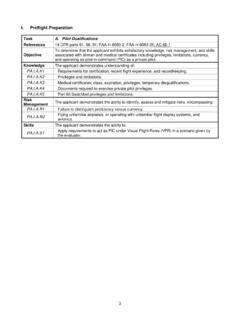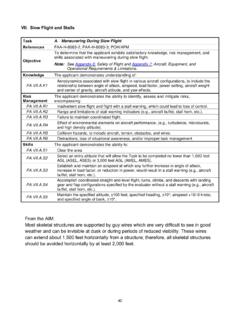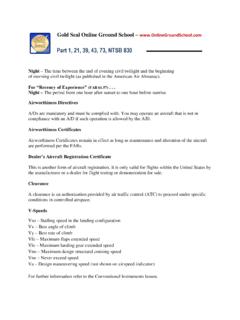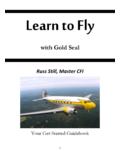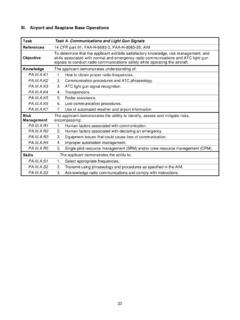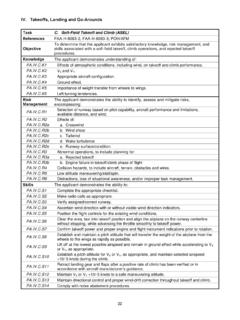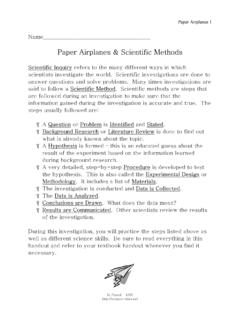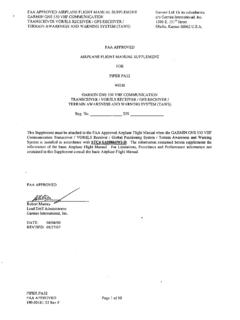Transcription of EMERGENCY DESCENTS (from the Airplane Flying …
1 EMERGENCY DESCENTS (from the Airplane Flying handbook , chapter 16) An EMERGENCY descent is a maneuver for descending as rapidly as possible to a lower altitude or to the ground for an EMERGENCY landing. The need for this maneuver may result from an uncontrollable fire, a sudden loss of cabin pressurization, or any other situation demanding an immediate and rapid descent. The objective is to descend the Airplane as soon and as rapidly as possible, within the structural limitations of the Airplane . Simulated EMERGENCY DESCENTS should be made in a turn to check for other air traffic below and to look around for a possible EMERGENCY landing area.
2 A radio call announcing descent intentions may be appropriate to alert other aircraft in the area. When initiating the descent, a bank of approximately 30 to 45 should be established to maintain positive load factors ( G forces) on the Airplane . EMERGENCY descent training should be performed as recommended by the manufacturer, including the configuration and airspeeds. Except when prohibited by the manufacturer, the power should be reduced to idle, and the propeller control (if equipped) should be placed in the low pitch (or high revolutions per minute ( )) position.
3 This will allow the propeller to act as an aerodynamic brake to help prevent an excessive airspeed buildup during the descent. The landing gear and flaps should be extended as recommended by the manufacturer. This will provide maximum drag so that the descent can be made as rapidly as possible, without excessive airspeed. The pilot should not allow the Airplane s airspeed to pass the never-exceed speed (VNE), the maximum landing gear extended speed (VLE), or the maximum flap extended speed (VFE), as applicable. In the case of an engine fire, a high airspeed descent could blow out the fire.
4 However, the weakening of the Airplane structure is a major concern and descent at low airspeed would place less stress on the Airplane . If the descent is conducted in turbulent conditions, the pilot must also comply with the design maneuvering speed (VA) limitations. The descent should be made at the maximum allowable airspeed consistent with the procedure used. This will provide increased drag and therefore the loss of altitude as quickly as possible. The recovery from an EMERGENCY descent should be initiated at a high enough altitude to ensure a safe recovery back to level flight or a precautionary landing.
5 When the descent is established and stabilized during training and practice, the descent should be terminated. Gold Seal Note: In the absence of other specifications, an EMERGENCY descent with flaps extended should be flown with an airspeed at the top of the white arc (Vfe). An EMERGENCY descent with flaps retracted should be flown with an airspeed at the top of the green arc (Vno). Additional airspeed into the yellow arc may be considered at the pilot s discretion only in the lack of turbulence or airframe damage. From the Gold Seal Online Ground School Library
